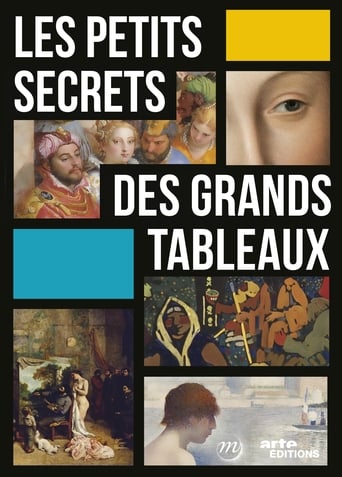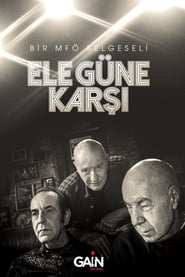In "The Wedding at Cana", Paolo Veronese transposes the biblical tale of Christ's first miracle to the scene of a sumptuous Venetian banquet. This documentary explores the historical context of 16th century Venice, a wealthy and politically stable city in which artists such as Veronese, Titian, and Jacobo Tintoretto were granted freedom from religious censorship. It looks at Palladio's architectural influences, presents a theory that "The Wedding at Cana" may represent the crowning ceremony of a Doge's wife, and examines how Veronese combines the sacred and profane in his works. Finally, it looks at the painter's use of perspective, colors, and composition.
Season 1
The Moneylender and his Wife (1514) by Quentin Massys The Artist's Studio (1855) by Gustave Courbet Bathers at Asniers (1884) by Georges Seurat Las Meninas (1665) by Diego Velazquez The Wedding at Cana (1563) by Paolo Veronese The Martyrdom of Saint Appolonia (1461) by Jean Fouquet A Lady in Her Bath (1571) by Francois Clouet Marie-Antoinette de Lorraine-Habsbourg, Queen of France and Her Children (1787) by Elisabeth Vigée Le Brun Women of Algiers in Their Apartment (1834) by Eugène Delacroix Colorful Life (1907) by Wassily Kandinsky Where Do We Come From? What Are We? Where Are We Going? 1897, Paul Gauguin Temptations of St. Anthony, 1501, Hieronymus Bosch Western Port in Frankfurt am Main, 1916, Ludwig Kirchner Lady and the Unicorn, Circa 1500, Anonymous The Primavera, 1482, Sandro Botticelli The Astronomer (1668) by Johannes Vermeer The Night Watch (1642) by Rembrandt Van Rijn The Second of May 1808 (1814) by Francisco Goya Women on a Café Terrace in the Evening (1877) by Edgar Degas View of Warsaw From the Terrace of the Royal Palace (1773) by Bernardo Bellotto Dance at Le Moulin de la Galette, 1876, Renoir Pulcinella and Acrobats, 1797, Tiepolo The Slave Ship, 1840, J.M. Turner Men of the Docks, 1912, Bellows
The Moneylender and his Wife (1514) by Quentin Massys The Artist's Studio (1855) by Gustave Courbet Bathers at Asniers (1884) by Georges Seurat Las Meninas (1665) by Diego Velazquez The Wedding at Cana (1563) by Paolo Veronese The Martyrdom of Saint Appolonia (1461) by Jean Fouquet A Lady in Her Bath (1571) by Francois Clouet Marie-Antoinette de Lorraine-Habsbourg, Queen of France and Her Children (1787) by Elisabeth Vigée Le Brun Women of Algiers in Their Apartment (1834) by Eugène Delacroix Colorful Life (1907) by Wassily Kandinsky Where Do We Come From? What Are We? Where Are We Going? 1897, Paul Gauguin Temptations of St. Anthony, 1501, Hieronymus Bosch Western Port in Frankfurt am Main, 1916, Ludwig Kirchner Lady and the Unicorn, Circa 1500, Anonymous The Primavera, 1482, Sandro Botticelli The Astronomer (1668) by Johannes Vermeer The Night Watch (1642) by Rembrandt Van Rijn The Second of May 1808 (1814) by Francisco Goya Women on a Café Terrace in the Evening (1877) by Edgar Degas View of Warsaw From the Terrace of the Royal Palace (1773) by Bernardo Bellotto Dance at Le Moulin de la Galette, 1876, Renoir Pulcinella and Acrobats, 1797, Tiepolo The Slave Ship, 1840, J.M. Turner Men of the Docks, 1912, Bellows






